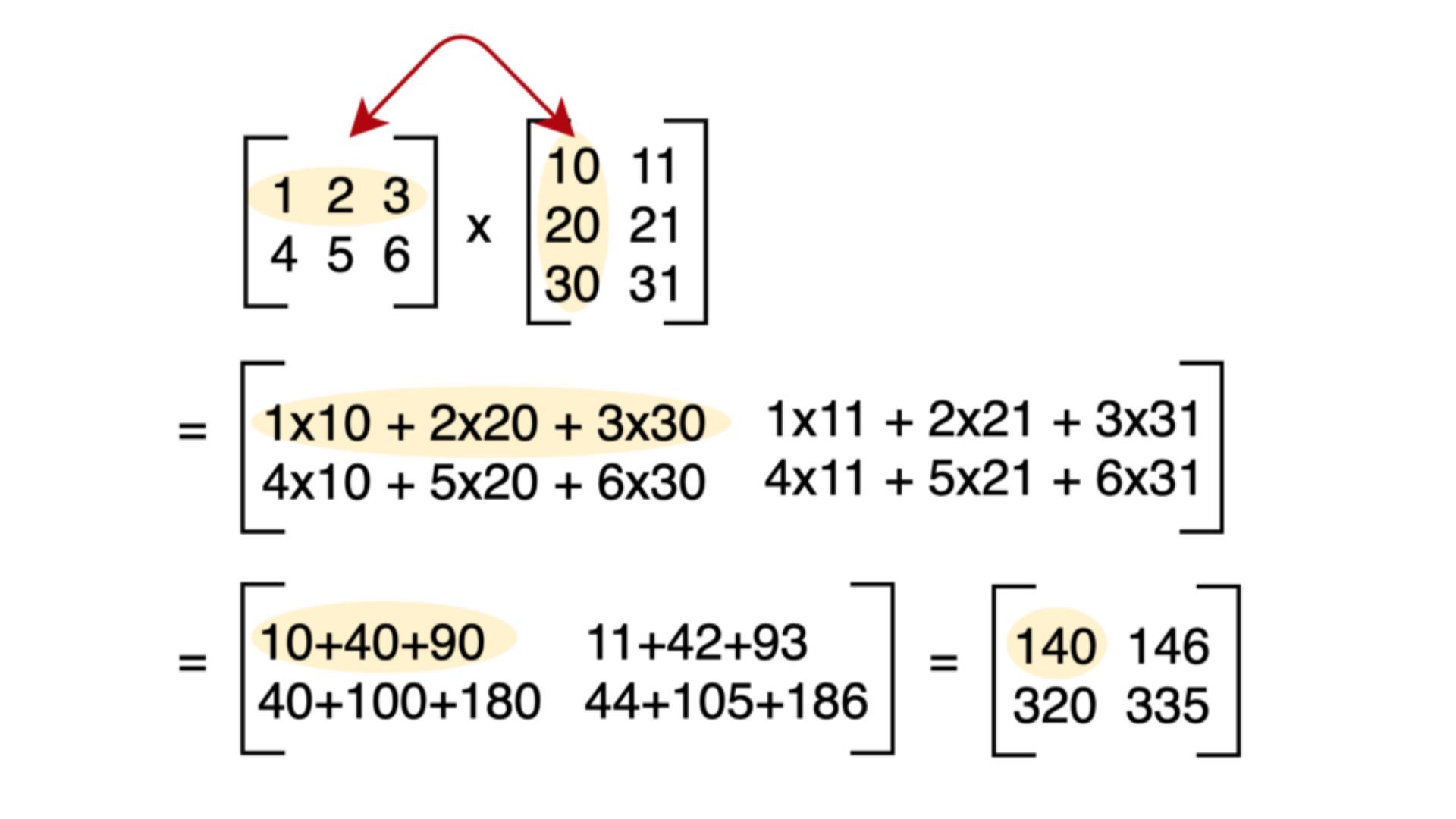Python – A Practical Guide To Numpy And How To Use It
Numpy Is A Python Library Used To Perform Scientific Operations And Numerical Calculations. It Stands For “Numerical Python.”
Numpy is compelling in data processing and scientific data analysis. It performs matrix calculations, numerical calculations, Fourier series transformation, mathematical and statistical operations, and other scientific applications.
 What is the primary use of Numpy?
What is the primary use of Numpy?
Using NumPy, you can work with multidimensional datasets and perform matrix and vector operations. Also, NumPy has many default functions for statistical and mathematical calculations, such as mean, variance, standard deviation, and analysis of probability distribution functions.
NumPy is used as one of the base libraries in many scientific and computational projects, and due to its high speed and performance, it is beneficial for data scientists, researchers, and students who deal with big data.
NumPy is a Python library designed for scientific data processing and numerical calculations. In NumPy, data is stored as multidimensional arrays (arrays) that enable fast and optimal operations on them.
Due to these high capabilities, NumPy is used in many scientific and computational fields. For example, NumPy is used in medicine, statistics, physics, mathematics, computer science, etc.
Other features of NumPy include the following:
- Ability to perform matrix and vector operations at high speed
- Ability to perform mathematical and statistical functions such as calculating mean, variance, standard deviation, etc
- Ability to perform Fourier transform (FFT) on audio and video data
- Ability to create random data with different distributions
- Ability to perform extensive data analysis
- The ability to create multidimensional data sets with different dimensions
NumPy is recognized as one of the basic libraries in scientific and computational data processing and is used in many scientific and industrial projects.
Features of NumPy
NumPy is a Python library for scientific data processing and matrix operations. Some of the features of this library are:
- Multidimensional arrays: NumPy allows users to create and manipulate collections of various sizes and dimensions, including matrices and vectors.
- Matrix and vector operations: NumPy supports matrix and vector operations and provides functions for matrix multiplication, transpose, inverse, determinant, and other matrix operations.
- Big data processing: NumPy allows users to process extensive data quickly. This library is optimized for extensive data processing.
- Support for statistical functions: NumPy provides various statistical functions for scientific and statistical data processing, including mean, variance, standard deviation, and normal distribution functions.
- Compatibility with other libraries: NumPy is compatible with many different libraries in Python, such as Pandas, SciPy, and Matplotlib, and by default, it works well with them.
- Readable code: NumPy allows users to create legible and understandable code to process their data.
- Advanced features: NumPy provides users with advanced features such as processing probability distributions, image processing, and signal processing.
Overall, NumPy is one of the most powerful Python libraries for scientific and computational data processing and is widely used in various fields, including engineering, physics, statistics, and data science.
How to use NumPy?
To use NumPy, you must first import it into your project. You can use the import command to do this. For example, the:
Import numpy as np
Here, NumPy is imported as np.
Now, you can use NumPy functions and features. For example, you can create a 2D array using the np. Array function:
import numpy as np arr = np.array([[1, 2, 3], [4, 5, 6]]) print(arr)
This code creates a 2D array of x3 dimensions, stores it in the arr variable, and prints it.
Also, you can use NumPy functions to perform mathematical and statistical operations on your data. For example, you can calculate the mean and variance of an array using the np. Mean and np. Var functions:
import numpy as np
arr = np.array([1, 2, 3, 4, 5])
mean = np.mean(arr)
variance = np.var(arr)
print("Mean:", mean)
print("Variance:", variance)This code calculates the mean and variance of the array arr and prints them. Here, the functions np. Mean, and np. Var calculates the mean and variance of the data, respectively. You can perform many mathematical and statistical operations on your data using NumPy functions.
Can we create arrays larger than 2D with NumPy?
The answer is yes. With NumPy, you can create arrays with dimensions greater than two. For example, you can make a 3D array using the np. Array function:
import numpy as np arr = np.array([[[1, 2], [3, 4]], [[5, 6], [7, 8]]]) print(arr)
This code creates a 3D array, stores it in the arr variable, and prints it.
You can also create arrays with more than three dimensions using NumPy functions. In general, NumPy can create multidimensional arrays of various sizes.
In connection with arrays with more than two dimensions, you should be careful that they are not easily read and displayed, and you should find ways to display them according to your needs. Also, note that the larger the arrays are, the more memory they consume.
Can we do matrix operations with NumPy?

One of the main features of NumPy is the ability to perform matrix and vector operations at high speed. For example, you can multiply two matrices using the np. Dot function:
import numpy as np matrix1 = np.array([[1, 2], [3, 4]]) matrix2 = np.array([[5, 6], [7, 8]]) result = np.dot(matrix1, matrix2) print(result)
This code creates two matrices and multiplies them using the np. The dot function stores the result in the result variable and prints it.
NumPy also provides other facilities for matrix operations, such as the np. Transpose function for transposing a matrix and the np.linalg.inv and np. linalg—det functions for computing the inverse and determinant of a matrix.
Using the capabilities of NumPy for performing matrix operations, you can use the above library in scientific and computational data processing and many problems and perform mathematical functions more quickly and accurately.
What is the difference between NumPy and Pandas?
NumPy and Pandas are popular Python libraries for working with scientific data and matrix operations. However, both libraries have different capabilities and are used for other applications.
NumPy is known as a basic library in scientific and mathematical data processing. This library provides a way to create and manage arrays and matrices in Python and fully supports matrix and vector capabilities. NumPy is also used as a base library for many other Python libraries.
Pandas is a compelling library that works with tabular data. This library allows users to work with large and complex tabular data, separate and analyze them, and use various functions such as analytical functions and transformation processes to analyze their data. Pandas provides users advanced features such as data integration, fusion, group analysis, temporal analysis, and statistical calculations.
Overall, NumPy is best suited for working with matrices and scientific data, while Pandas is recommended for working with tabular data and their analysis. Both libraries are popular and can be used to solve many data-related problems.
Advantages of using the Numpy library

Using the NumPy library for scientific and computational data processing has many advantages. Below are some of these benefits:
- High speed: NumPy has optimized algorithms for matrix and vector operations that make matrix and vector operations very fast.
- High efficiency: NumPy enables extensive data processing using multidimensional arrays. This library is optimized for big data processing and can process big data quickly and efficiently.
- Support for matrix operations: Besides supporting vector functions, NumPy also provides many functions to perform matrix operations, such as matrix multiplication, transpose, inverse, determinant, etc.
- Compatibility with other libraries: NumPy is well-known for scientific data processing in Python; by default, it is compatible with many different data processing libraries, such as Pandas, SciPy, and Matplotlib.
- Readable code: NumPy has readable code, and you can easily create and manage different arrays and matrices.
In general, NumPy is one of the most powerful Python libraries for scientific and computational data processing, and using this library, you can perform complex operations on your data more quickly and accurately.
Should I use NumPy or Pandas?
Using NumPy and Pandas will vary depending on your situation and needs due to their different capabilities and features. Here are some reasons why you should use NumPy or Pandas:
It is convenient to use NumPy:
- For matrix and vector operations
- For processing large volumes of scientific and computational data
- For image and signal processing
- For multidimensional data processing
- To perform complex matrix calculations and high-speed numerical data processing
It is suitable to use pandas:
- To process tabular data
- For working with hierarchical data and long-term structured data
- For working with data related to statistics and data science
- To create and manage the data in the database
NumPy is a base library for scientific and computational data processing in Python, and Pandas is a library for working with tabular and hierarchical data. However, you can combine these two libraries to create a complete scientific and statistical data processing package.
Is NumPy easy to learn?
NumPy is relatively easy for those familiar with general programming concepts and mathematics. However, for those less familiar with programming concepts and mathematics, it may be a bit difficult at first.
First, to start with NumPy, you must familiarize yourself with its basic concepts, such as arrays, dimensions, data types, and array operations. Next, familiarize yourself with the various NumPy functions for matrix operations, statistical calculations, and signal and image processing.
Despite this, NumPy is a compelling and extensive library that requires learning more advanced concepts optimally. Therefore, to thoroughly learn NumPy, you must continuously practice and improve your skills using various educational resources such as books, videos, and tutorials.

